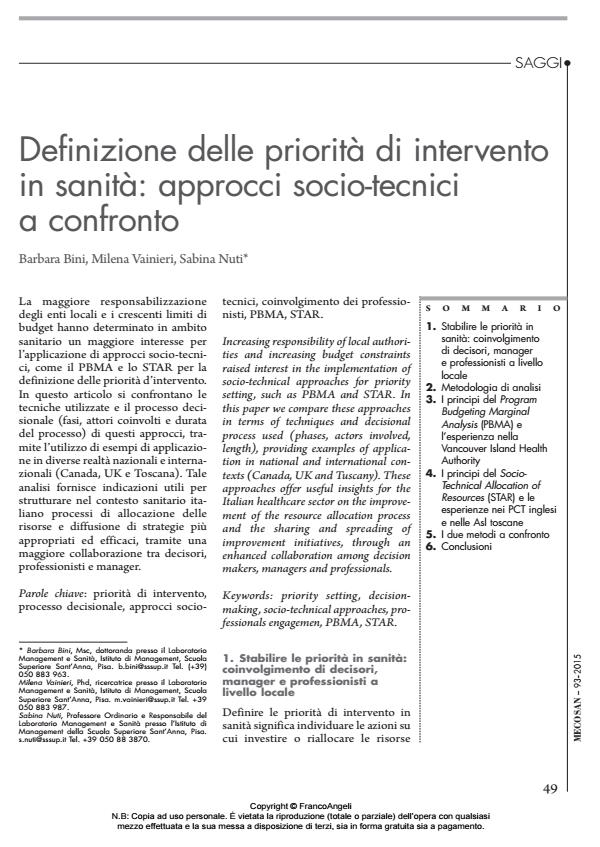Definizione delle priorità di intervento in sanità: approcci socio-tecnici a confronto
Journal title MECOSAN
Author/s Barbara Bini, Milena Vainieri, Sabina Nuti
Publishing Year 2015 Issue 2015/93
Language Italian Pages 25 P. 49-73 File size 1088 KB
DOI 10.3280/MESA2015-023004
DOI is like a bar code for intellectual property: to have more infomation
click here
Below, you can see the article first page
If you want to buy this article in PDF format, you can do it, following the instructions to buy download credits

FrancoAngeli is member of Publishers International Linking Association, Inc (PILA), a not-for-profit association which run the CrossRef service enabling links to and from online scholarly content.
Increasing responsibility of local authorities and increasing budget constraints raised interest in the implementation of socio-technical approaches for priority setting, such as PBMA and STAR. In this paper we compare these approaches in terms of techniques and decisional process used (phases, actors involved, length), providing examples of application in national and international contexts (Canada, UK and Tuscany). These approaches offer useful insights for the Italian healthcare sector on the improvement of the resource allocation process and the sharing and spreading of improvement initiatives, through an enhanced collaboration among decision makers, managers and professionals.
Keywords: Priority setting, decisionmaking, socio-technical approaches, professionals engagemen, PBMA, STAR.
Barbara Bini, Milena Vainieri, Sabina Nuti, Definizione delle priorità di intervento in sanità: approcci socio-tecnici a confronto in "MECOSAN" 93/2015, pp 49-73, DOI: 10.3280/MESA2015-023004